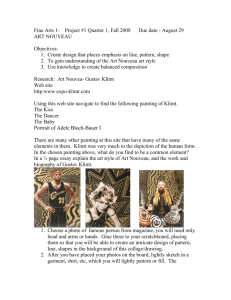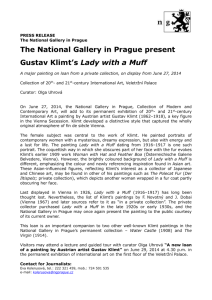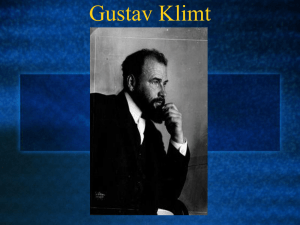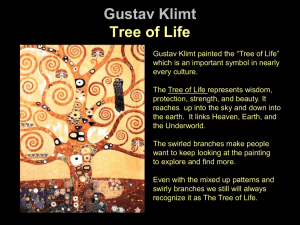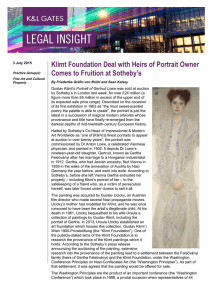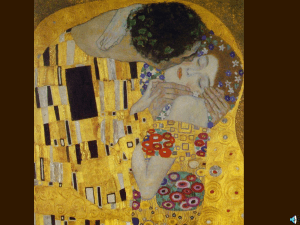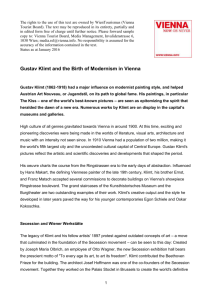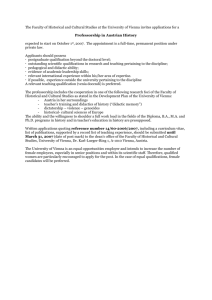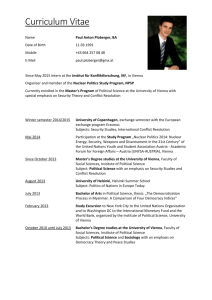gustav klimt - Dijaski.net
advertisement
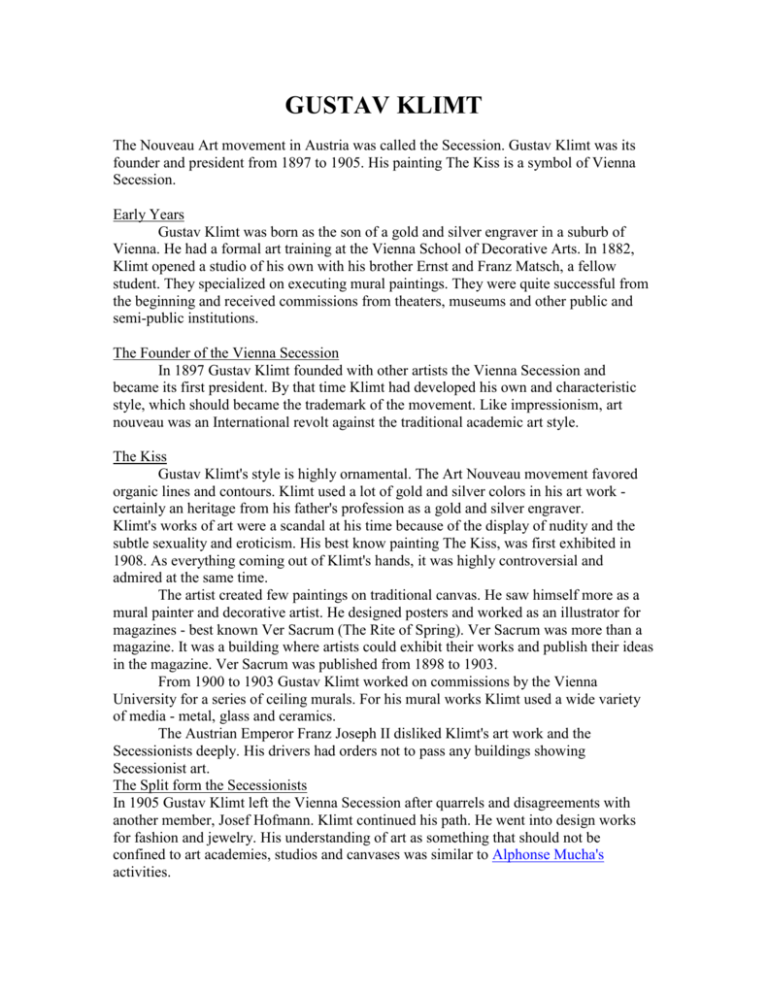
GUSTAV KLIMT The Nouveau Art movement in Austria was called the Secession. Gustav Klimt was its founder and president from 1897 to 1905. His painting The Kiss is a symbol of Vienna Secession. Early Years Gustav Klimt was born as the son of a gold and silver engraver in a suburb of Vienna. He had a formal art training at the Vienna School of Decorative Arts. In 1882, Klimt opened a studio of his own with his brother Ernst and Franz Matsch, a fellow student. They specialized on executing mural paintings. They were quite successful from the beginning and received commissions from theaters, museums and other public and semi-public institutions. The Founder of the Vienna Secession In 1897 Gustav Klimt founded with other artists the Vienna Secession and became its first president. By that time Klimt had developed his own and characteristic style, which should became the trademark of the movement. Like impressionism, art nouveau was an International revolt against the traditional academic art style. The Kiss Gustav Klimt's style is highly ornamental. The Art Nouveau movement favored organic lines and contours. Klimt used a lot of gold and silver colors in his art work certainly an heritage from his father's profession as a gold and silver engraver. Klimt's works of art were a scandal at his time because of the display of nudity and the subtle sexuality and eroticism. His best know painting The Kiss, was first exhibited in 1908. As everything coming out of Klimt's hands, it was highly controversial and admired at the same time. The artist created few paintings on traditional canvas. He saw himself more as a mural painter and decorative artist. He designed posters and worked as an illustrator for magazines - best known Ver Sacrum (The Rite of Spring). Ver Sacrum was more than a magazine. It was a building where artists could exhibit their works and publish their ideas in the magazine. Ver Sacrum was published from 1898 to 1903. From 1900 to 1903 Gustav Klimt worked on commissions by the Vienna University for a series of ceiling murals. For his mural works Klimt used a wide variety of media - metal, glass and ceramics. The Austrian Emperor Franz Joseph II disliked Klimt's art work and the Secessionists deeply. His drivers had orders not to pass any buildings showing Secessionist art. The Split form the Secessionists In 1905 Gustav Klimt left the Vienna Secession after quarrels and disagreements with another member, Josef Hofmann. Klimt continued his path. He went into design works for fashion and jewelry. His understanding of art as something that should not be confined to art academies, studios and canvases was similar to Alphonse Mucha's activities. Prints and Posters The graphic works of the Vienna Secessionists were edited in very small numbers. Consequently they are rare today. And posters by Klimt are the most sought after. An original poster is not available below a five digit dollar price. There are reprints and fakes on the market. Graphic works by the Vienna Secessionists and especially by Klimt are no market for new collectors and for art enthusiasts with a limited budget. Source: http://www.artelino.com/articles/gustav_klimt.asp English word engraver Slovenian word vrezovalec execute izvršiti mural freska subtle fin, zvit commission provizija medium (plural media or mediums) be confined to somewhere/sth sredstvo, pripomoček omejevati English explanation a person whose job is to engrave (to cut words, pictures or patterns into the surface of metal, stone, etc) things to do or perform something, especially in a planned way a large picture that has been painted on the wall of a room or building not loud, bright, noticeable or obvious in any way a (system of) payment to someone who sells goods which is directly related to the amount of goods sold a method or way of expressing something to exist only in a particular area or group of people SUMMARY Gustav Klimt was one of the most important painters of The Nouveau Art. He was its president and founder. His paintings and graphics are rare and consequently also expensive. He was a son of a gold and silver engraver, which reflected in his work until his end. At 14 he was enrolled in Vienna School of Decorative Arts, where his brother joined him some years later. He, his brother and Franz Matsch opened a studio, which was specialized on mural paintings. They were quite successful. Some years later he founded Vienna Secession. This was an international revolt against the traditional art style, which did not allow changes. The Austrian Emperor Franz Joseph II hated his work and pictures. This hatred went so far, that he did not even want to pass by any buildings with Secession features. Klimt’s style was very ornamental with a lot of gold and silver colours (the thank goes to his father engraver). At the beginning were his pictures a bit more modest and not so ornamented, but his most beautiful pictures are very ornamented. At his time his pictures were scandalous because the nudity and eroticism. His most known picture is The Kiss, which is exhibited in Vienna in Österreichische Galerie Belvedere. The second most known picture is the portrait of Adele Bloch-Bauer. It is exhibited in NY in Ronald S. Lauder’s Neue Galerie. He bought it for $135 million. Nowadays his pictures and works are not available for less then five digit dollar price. His art will live forever. At the time his exhibition is in Vienna.
